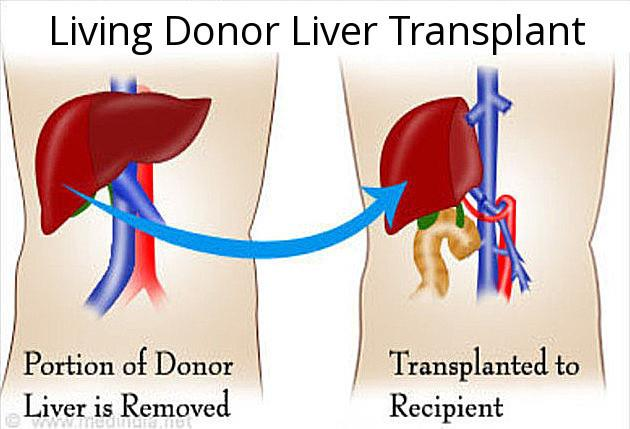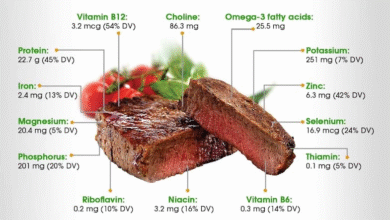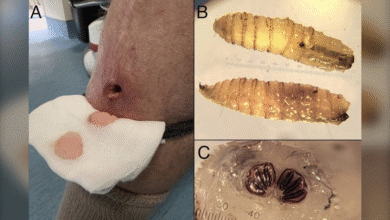Living Liver Donation: A Second Chance at Life

Living liver donation is an inspiring and courageous act that can save lives, especially in cases where patients face severe health challenges, such as liver disease or cancer. When Steven Register, a former MLB pitcher, was diagnosed with stage 4 colon cancer, the possibility of a liver transplant emerged as his best hope for survival. An urgent plea for a liver donor on social media led to a remarkable reconnection with a high school acquaintance, Kristin Johnston, who selflessly offered to donate part of her liver. With the right blood type match and the support of both families, this act of living organ donation represents not only the potential for a second chance at life for Register but also highlights the critical importance of organ donation awareness. Through stories like this, we can inspire others to consider becoming a liver donor and help save lives in the process.
The concept of living organ donation encompasses various forms of altruistic giving, including the donation of segments of the liver from a healthy individual to someone in dire need. In this instance, a heartfelt social media outreach unveiled a miraculous connection between two individuals separated by years, showcasing the power of community and empathy. As Steven Register grapples with the fallout of colon cancer, the promise of a liver transplant through living liver donation stands as a beacon of hope for both him and his family. This touching narrative exemplifies how a simple act of kindness, inspired by awareness of organ donation, can alter the fates of those battling life-threatening conditions. Such selfless acts not only save lives but also build unbreakable bonds, transcending the ordinary into the extraordinary.
The Urgent Need for a Liver Donor
In the wake of serious medical diagnoses, the need for a liver donor becomes crucial for many facing life-threatening conditions. Steven Register’s experience is a stark reminder of how quickly life can change, transitioning from a typical life to one filled with uncertainty after his diagnosis with stage 4 colon cancer. The urgency of finding a liver donor is not just about extending life; it represents a vital lifeline for those fighting against time. As families scramble to find a solution, stories like Steven’s highlight the pressing need for awareness around organ donation.
Organ donation, particularly living liver donation, can be life-saving. Register’s case underscores how a simple social media post can kickstart a wave of compassion and support. His wife’s efforts to establish a Facebook group not only spread awareness but also connected them with individuals like Kristin Johnston, who are willing to sacrifice part of themselves for others in need. The journey to finding a liver donor can be overwhelming, but it is essential in the fight against diseases like cancer, where time is of the essence.
Understanding Living Liver Donation
Living liver donation involves the surgical removal of a portion of a healthy person’s liver to transplant into someone with severe liver disease. This procedure, while complex, offers hope where traditional methods may not suffice. As exemplified by Register’s situation, living donors can make a profound impact — providing a second chance at life. The liver has a unique ability to regenerate, meaning that both the donor and recipient can enjoy restored health following the procedure.
Despite the misconceptions surrounding living organ donation, the reality is that it is a feasible and life-affirming option. Johnston’s willingness to step up and offer a lobe of her liver illustrates the selflessness that is at the heart of living liver donation. Awareness campaigns, like the one initiated by Beth Register, are crucial in spreading knowledge about the process and impact of living organ donations, encouraging more potential donors to consider the life-changing opportunity they could provide.
The Role of Community in Organ Donation
Community plays a vital role in organ donation efforts, often becoming the backbone of support for families navigating these challenging situations. In Steven’s case, the local community rallied around the Register family, illustrating how communal ties can lead to miraculous outcomes. Platforms like Facebook allow stories to reach a broader audience, creating a network of potential donors who may feel compelled to help someone they don’t even know personally.
The combined efforts of families and supportive communities not only provide emotional backing but can also facilitate financial assistance through fundraisers. The Register family’s initiative to raise funds for medical expenses showcases how community involvement can extend far beyond emotional support, helping to ease the burdens associated with the transplant process. With the right awareness and support, countless lives can be transformed through living organ donation.
Overcoming the Challenges of Organ Transplants
The journey towards receiving a life-saving organ transplant is fraught with challenges. For Steven Register, the process began with a daunting stage 4 colon cancer diagnosis, which led to the discovery that he would require a liver transplant. Each step—from initial consultations and diagnostics to surgeries and compatibility tests—poses unique hurdles that patients and their families must navigate. Despite these challenges, the hope of a successful liver transplant often serves as a beacon of light in a dark time.
Medically, the process includes thorough evaluations and potential risks from both the donation and transplantation sides. However, successful outcomes can lead to remarkable recoveries. The emotional support from family, friends, and the medical community becomes critical during these moments, illustrating the importance of a support system in overcoming the challenges associated with organ transplants. Awareness and education about these challenges will empower more individuals to consider becoming donors.
The Impact of Facebook in Finding Organ Donors
Social media platforms like Facebook have revolutionized the way individuals seek assistance, especially in urgent health matters like finding an organ donor. Register’s wife leveraged the power of social media to create a community around his health needs, emphasizing the role of digital platforms in raising awareness and fostering connections. In an age where conversations about health challenges can reach far and wide, social media serves as a vital tool for those in search of living liver donations.
Through direct appeals and shared stories, such platforms can connect individuals with potential donors they may never have met otherwise. Kristin Johnston’s decision to become a liver donor was influenced directly by her connection to Register through social media, proving that digital outreach can yield real-life results. As awareness about living organ donation spreads through these channels, more individuals are likely to step forward, amplifying the collective impact of community support.
The Emotional Journey of Organ Donation
The emotional journey surrounding organ donation is layered and complex, often encompassing feelings of hope, anxiety, and gratitude. For both the donor and recipient, the process is deeply personal, with dreams of recovery intertwined with fears of the unknown. Steven Register’s story exemplifies this emotional rollercoaster, showcasing the profound impact of a selfless act as Kristin Johnston prepared to donate part of her liver.
The emotional bond that forms between donor and recipient can be a source of strength throughout the process. For the Register family, knowing that someone is willing to sacrifice for Steven’s health creates a sense of hope and gratitude that transcends their struggle with cancer. Such stories not only highlight the acts of bravery involved in living organ donation but also the potential for strong relationships built around the shared goal of survival and healing.
The Importance of Blood Type Compatibility in Liver Donation
When it comes to organ donation, particularly for liver transplants, blood type compatibility is a critical factor. It determines whether a potential donor and recipient can safely match for a successful transplant. In Steven Register’s case, blood type compatibility played a pivotal role when Kristin Johnston discovered they shared the same blood type, leading her to offer her liver for donation. This fortunate moment exemplifies the unique intricacies of organ donation, where compatibility can sometimes feel serendipitous.
Compatibility is not simply about blood type; it includes additional medical evaluations to ensure a successful transplantation process. Awareness about the importance of blood type in the context of living organ donation can encourage potential donors to check their compatibility, which in turn increases the chances of successful matches. A better understanding of these medical requirements will enhance the outreach efforts to find suitable living donors, ultimately saving more lives.
Fostering Awareness about Living Organ Donation
Raising awareness about living organ donation is crucial in dispelling myths and misconceptions that deter potential donors. Many individuals remain unaware that living donations are viable, particularly for organs like the liver. Through initiatives launched by families impacted by organ failures, like the Register family, more people can be educated on the realities of living organ donation. STories of hope, like Steven Register’s, inspire others to explore the possibility of becoming donors.
Educational campaigns aimed at communities, schools, and online networking can help mitigate fears associated with living organ donation. By sharing testimonies of successful transplants and showcasing the life-changing impacts these decisions have made on both donors and recipients, organizations can empower individuals to step forward. Ultimately, raising this awareness could lead to more lives saved and healthier futures for those requiring organ transplants.
The Journey Ahead After a Liver Transplant
The journey following a liver transplant is filled with strides towards recovery and rebuilding life. For Steven Register, post-surgery marks not just a new chapter in his health journey but an opportunity to embrace life with renewed vigor. As both he and Kristin Johnston prepare for the surgery, there is a shared anticipation of what the future will hold beyond the challenges that led them here.
Rehabilitation and lifestyle adjustments become crucial after the transplant as both the donor and recipient aim to recover fully and thrive. Doctors will implement strategies to monitor health and ensure the organs regenerate properly, showcasing the resilience of the human body. The emotional support from family and friends will remain vital during this transition, symbolizing a collective effort in private battles and a reminder of the gift of life.
Frequently Asked Questions
What is living liver donation and how is it performed?
Living liver donation is a surgical procedure where a healthy individual donates a portion of their liver to someone in need of a liver transplant. The donor typically undergoes a comprehensive evaluation to assess their health and compatibility before surgery, where about 70% of the donor’s liver is removed and transplanted into the recipient. Both the donor’s remaining liver and the transplanted portion regenerate over time.
What are the benefits of living liver donation over deceased organ donation?
Living liver donation can offer several advantages over deceased organ donation, including reduced waiting times for a liver transplant, as recipients can receive a liver from a living donor more quickly. Additionally, living liver transplants often have better outcomes and longer survival rates because the surgery is planned and the donor is carefully screened to ensure compatibility.
Who can be a living liver donor?
Potential living liver donors must be healthy individuals aged 18 to 60 who are compatible with the recipient’s blood type. They should not have any history of liver disease, certain cancers, or conditions that could affect their ability to heal after surgery. A thorough medical evaluation is conducted to ensure safety for both the donor and the recipient.
What is the recovery process like after living liver donation?
Recovery after living liver donation involves a hospital stay of about a week, followed by a gradual return to normal activities over the next several weeks. Donors can expect some pain and discomfort post-surgery but will typically heal well within a few months as the liver regenerates. Regular follow-up appointments will be necessary to monitor health.
How can one determine if they are a suitable living liver donor?
To determine if you are a suitable living liver donor, you should undergo a comprehensive evaluation at a transplant center, which includes blood tests, imaging studies, and assessments of your medical history. Compatibility with the recipient’s blood type is a crucial first step, as was the case when Kristin Johnston found out she shared the same blood type as Steven Register.
What impact does living liver donation have on the donor’s life?
Most individuals who donate a portion of their liver can return to their normal lives with minimal long-term impact, as the liver is one of the few organs that can regenerate. However, donors should be aware of potential lifestyle changes, such as modifications to diet and regular health check-ups for the rest of their lives.
How common is living liver donation in the context of liver transplants?
Living liver donation accounts for approximately 20-25% of all liver transplants performed in many regions, depending on local practices and the availability of deceased donor organs. It is increasingly recognized as a viable option for patients needing a liver transplant, especially when deceased donor waits can be lengthy.
What is the importance of raising awareness about living liver donation?
Raising awareness about living liver donation is vital as many people are unaware that they can donate a portion of their liver while still living. Increased awareness can lead to more successful matches for patients awaiting liver transplants, as shown in the story of Steven Register and Kristin Johnston, highlighting the profound impact of living organ donation.
What precautions should be taken by prospective living liver donors?
Prospective living liver donors should discuss potential risks and benefits with a healthcare team and consider personal health factors. It is crucial to undergo thorough medical evaluations, ensure complete understanding of the donation process, and maintain open communication with family and support networks throughout the decision-making process.
| Key Points | Details |
|---|---|
| Steven Register’s Diagnosis | Diagnosed with stage 4 colon cancer after significant weight loss. |
| Need for Transplant | Doctors advised a liver transplant as his best chance for survival. |
| Call for Help | Register’s wife created a Facebook group to find a living liver donor. |
| Unexpected Donor | Kristin Johnston, a former classmate, offered to donate part of her liver. |
| Blood Type Match | Johnston and Register discovered they had matching blood types (B positive). |
| Surgery Details | The surgery will involve removing 70% of Johnston’s liver for transplantation. |
| Family Support | Both families are raising funds for expenses related to the surgery. |
| Awareness Raising | Beth Register hopes their story highlights the importance of living organ donation. |
Summary
Living liver donation is a remarkable act of compassion that can save lives, as demonstrated in Steven Register’s story. After being diagnosed with terminal cancer, Steven’s journey led to an unexpected offer from a long-lost acquaintance, Kristin Johnston, who volunteered to donate part of her liver. Their story not only reflects the profound potential of living liver donation but also emphasizes the importance of community awareness and support in the face of medical crises. The collaboration and selflessness of individuals like Kristin illustrate how powerful human connections can lead to miraculous chances for life and health.




